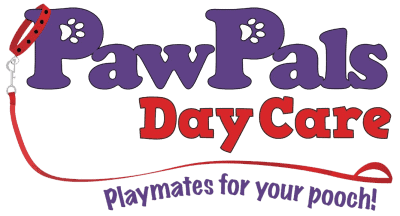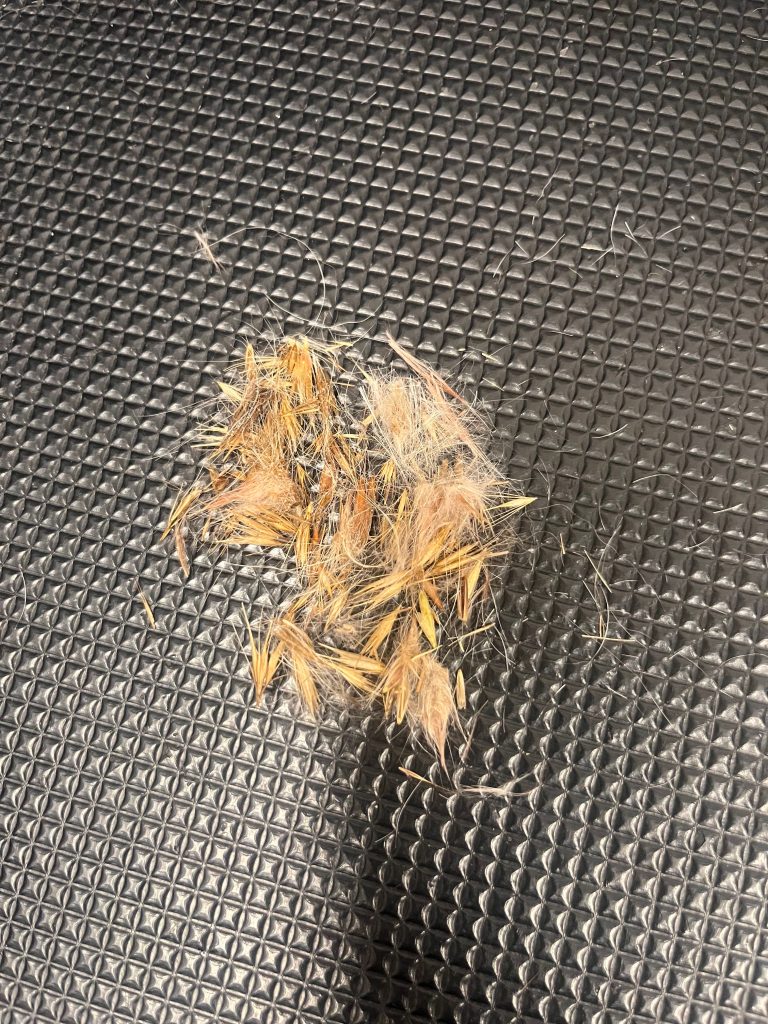With the arrival of grass seed season, warmer weather brings more outdoor activities, but it also poses hidden risks for our dogs. Grass seeds may appear harmless, yet they can lead to serious health problems if they get stuck in a dog’s fur, paws, or ears. At this time of year, it’s crucial to stay vigilant for these tiny hazards and make regular grooming a priority to help prevent any issues.
At PawPals Parlour, we’re committed to helping Perth dog owners understand the potential dangers of grass seeds and how routine grooming can be an essential step in keeping their pets safe and healthy.
What Are Grass Seeds and Why Are They Dangerous?
Grass seeds are small, sharp seeds that come from certain types of grasses. Their pointed structure allows them to stick easily to fur and unfortunately, they can also pierce a dog’s skin. Once a grass seed embeds itself, it can continue to travel deeper into the body, leading to painful infections or even requiring surgical removal.
Common areas where grass seeds can become lodged include:
- Paws: Between the toes and paw pads, where they can cause painful abscesses.
- Ears: Where they may lead to severe ear infections if they work their way inside.
- Eyes: Irritating the eyes and causing discomfort or infection.
- Nose: Inhaled grass seeds can move up the nasal passages, causing sneezing, discharge and pain.
- Skin: Anywhere on the body, particularly around the legs, belly, and armpits, where they can create painful sores or abscesses.
These seeds are more than a simple annoyance – they can become serious health hazards. That’s why it’s crucial to be vigilant during grass seed season.
How Regular Grooming Helps Protect Your Dog
Regular grooming is one of the most effective ways to spot and prevent grass seed issues before they become serious. Here’s how grooming can help:
- Frequent Fur Checks: Grooming sessions give you or your groomer a chance to inspect your dog’s coat thoroughly. By checking the fur for seeds, burrs or any foreign objects, you can remove them before they cause harm.
- Trimming Fur in Vulnerable Areas: Dogs with longer fur around their paws, ears, and belly are more likely to pick up grass seeds. Regular grooming keeps these areas neatly trimmed, reducing the chances of seeds getting stuck.
- Early Detection of Irritations: Grass seeds can cause redness, swelling, or pain as they embed. During grooming, your groomer can spot these signs early, allowing you to address any issues promptly.
- Professional Ear Cleaning: Groomers can gently clean around and inside the ears (to a safe degree), reducing the risk of seeds getting lodged in these sensitive areas.
At PawPals Parlour, our groomers are trained to check for grass seeds and keep an eye out for any signs of discomfort or irritation. Regular visits to the groomer during grass seed season can make a big difference in protecting your dog.
Tips for Checking Your Dog at Home
In addition to regular grooming, it’s a good idea to check your dog for grass seeds at home, especially after walks or outdoor play. Here are some tips to help you spot any seeds that may be hiding in your dog’s fur:
- Inspect Paws Carefully: Check between your dog’s toes and around the paw pads. Grass seeds often get trapped in these areas, and dogs may lick or chew at their paws if they’re uncomfortable.
- Examine the Ears: Look for any redness, swelling, or signs of discomfort around the ears. If your dog is shaking their head or scratching at their ears, it could be a sign that something’s inside.
- Look Over the Body and Belly: Run your hands gently along your dog’s body, paying attention to the legs, belly, and armpits. These areas are common spots for seeds to get caught, especially in dogs with longer coats.
- Check Around the Eyes and Nose: Watch for signs of squinting, discharge, or sneezing. Grass seeds can cause irritation around the eyes and, in rare cases, can even be inhaled into the nose.
- Brush After Outdoor Adventures: A quick brush after walks can help remove any loose grass seeds before they have a chance to embed in the fur.
By combining regular grooming with these at-home checks, you can reduce the risk of grass seeds causing discomfort or harm to your dog.
What to Do If You Find a Grass Seed on Your Dog
If you spot a grass seed on your dog’s coat, carefully remove it using tweezers. However, if the seed is already embedded in the skin, it’s best to seek help from a vet or professional groomer. Attempting to remove a deeply embedded seed can be painful for your dog and may push it in further, increasing the risk of infection.
If you notice signs of irritation, swelling, or discharge around areas like the paws, ears or eyes, it’s essential to get your dog checked by a vet as soon as possible.
Protect Your Dog This Grass Seed Season with PawPals Parlour
Grass seeds are a common hazard during the warmer months, but with regular grooming and a few extra precautions, you can protect your dog and keep them comfortable. At PawPals Parlour, our grooming team is here to help you through grass seed season. We provide thorough inspections, professional trims and caring attention to detail to ensure your dog stays safe and happy.
If you’re looking to protect your dog from grass seeds and keep their coat in top condition, book a grooming session with PawPals Parlour today. Let us help you keep your pup healthy and comfortable all season long.

